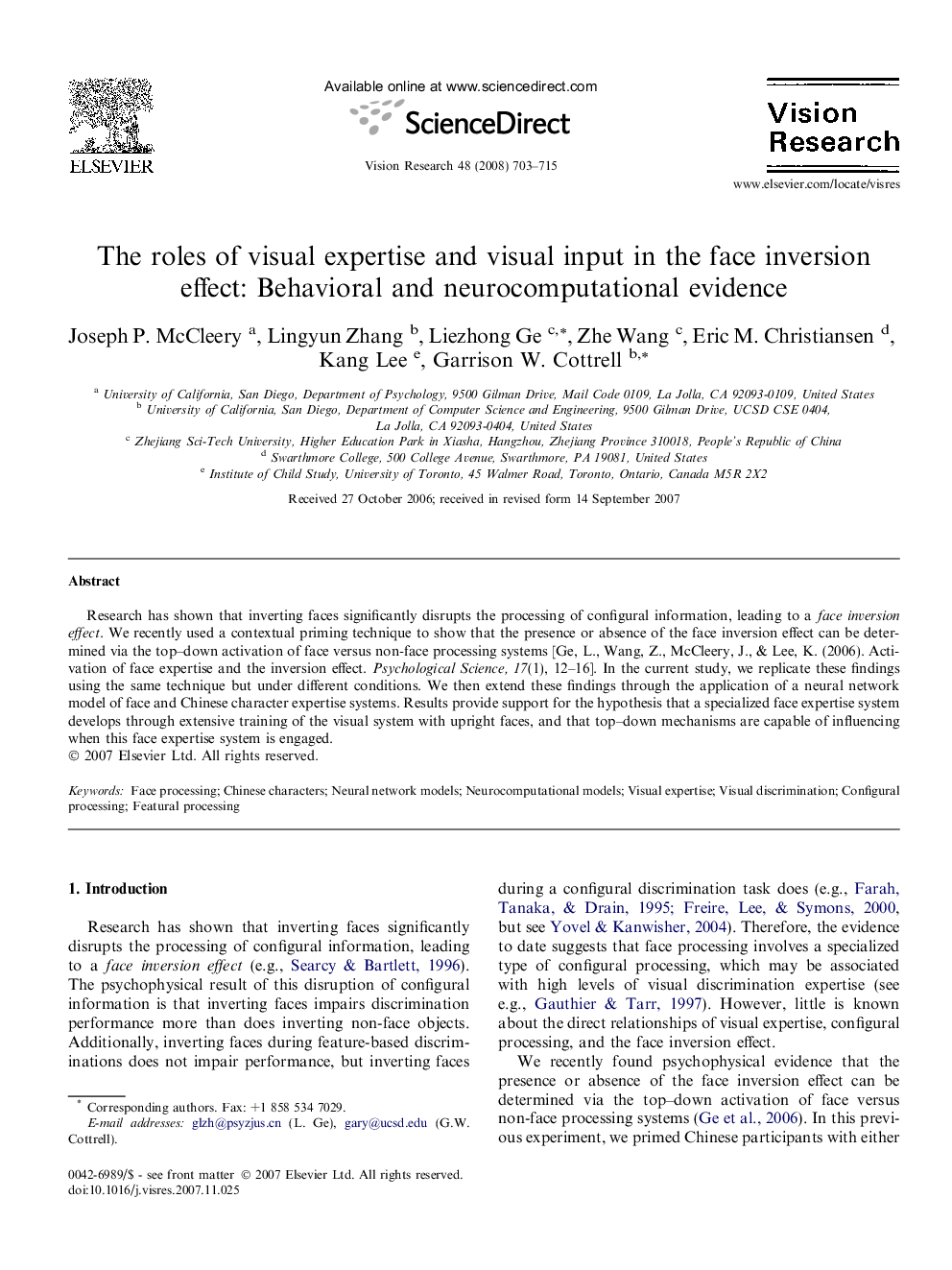| Article ID | Journal | Published Year | Pages | File Type |
|---|---|---|---|---|
| 4035884 | Vision Research | 2008 | 13 Pages |
Research has shown that inverting faces significantly disrupts the processing of configural information, leading to a face inversion effect. We recently used a contextual priming technique to show that the presence or absence of the face inversion effect can be determined via the top–down activation of face versus non-face processing systems [Ge, L., Wang, Z., McCleery, J., & Lee, K. (2006). Activation of face expertise and the inversion effect. Psychological Science, 17(1), 12–16]. In the current study, we replicate these findings using the same technique but under different conditions. We then extend these findings through the application of a neural network model of face and Chinese character expertise systems. Results provide support for the hypothesis that a specialized face expertise system develops through extensive training of the visual system with upright faces, and that top–down mechanisms are capable of influencing when this face expertise system is engaged.
